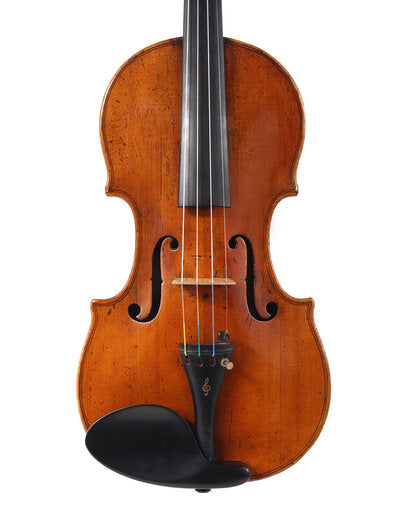Understanding Violin Wood: How Spruce and Maple Affect Tone and Projection
Share
The foundation of every great violin lies in its wood selection. For centuries, luthiers have understood that the choice of spruce for the top and maple for the back and sides fundamentally shapes a violin's tonal character, projection capabilities, and overall sound quality. Whether you're shopping for your first instrument or upgrading to a professional violin, understanding how different wood characteristics affect sound will help you make an informed decision that matches your musical goals.
The Science Behind Violin Wood and Sound Production
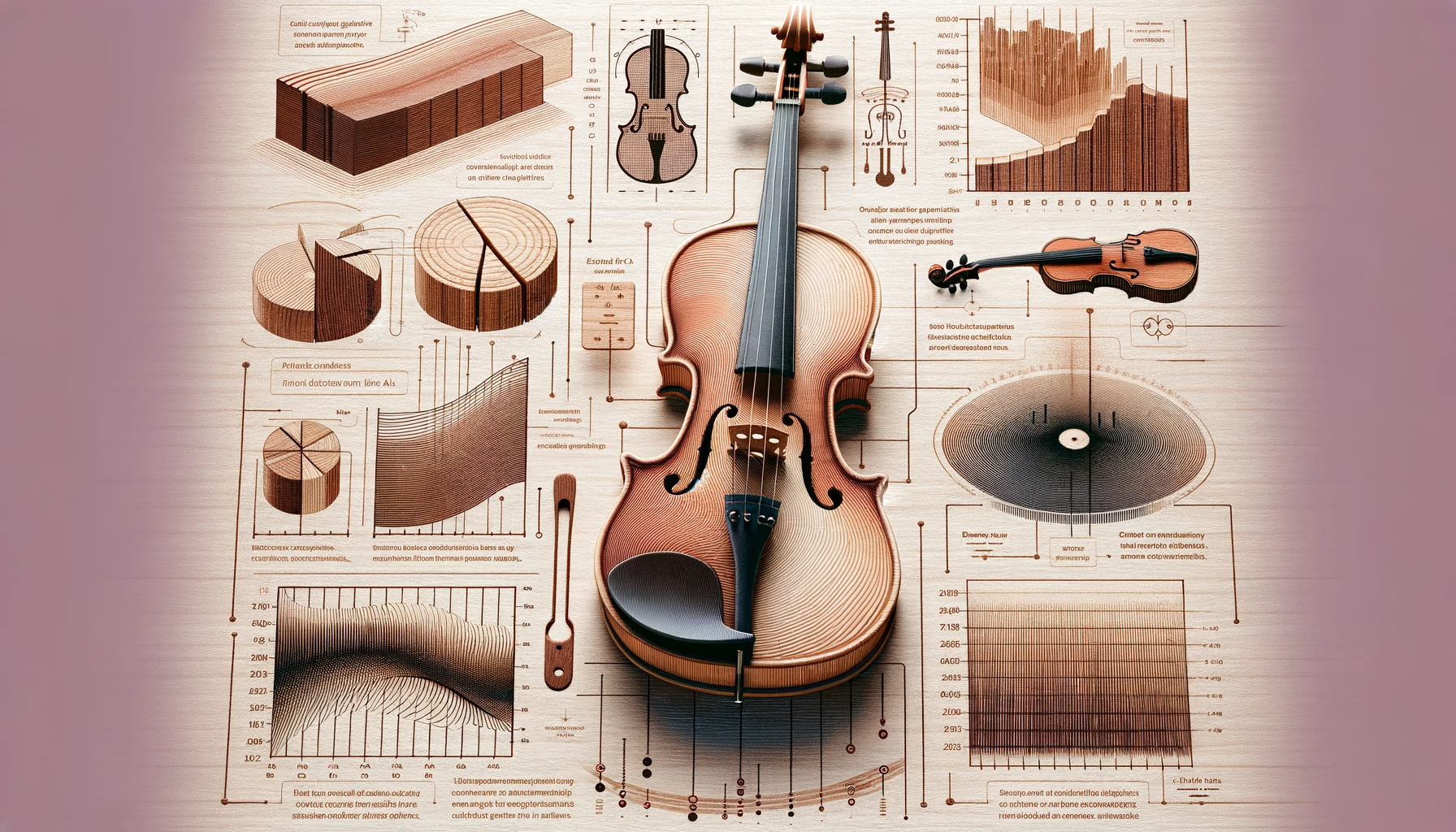
When a violin string vibrates, it transfers energy to the bridge, which transmits these vibrations throughout the instrument's wooden body. The wood acts as a complex resonating system, amplifying and shaping the sound before projecting it to the listener. Different wood species, grain patterns, and aging processes create unique acoustic properties that directly influence the violin's tonal signature.
The relationship between wood density, stiffness, and resonance determines how efficiently a violin converts string vibrations into audible sound. Lighter woods with optimal stiffness-to-weight ratios generally produce better projection and more complex harmonic content. This is why master luthiers spend considerable time selecting and preparing wood for their instruments.
Spruce: The Foundation of Violin Tone
European Spruce - The Gold Standard
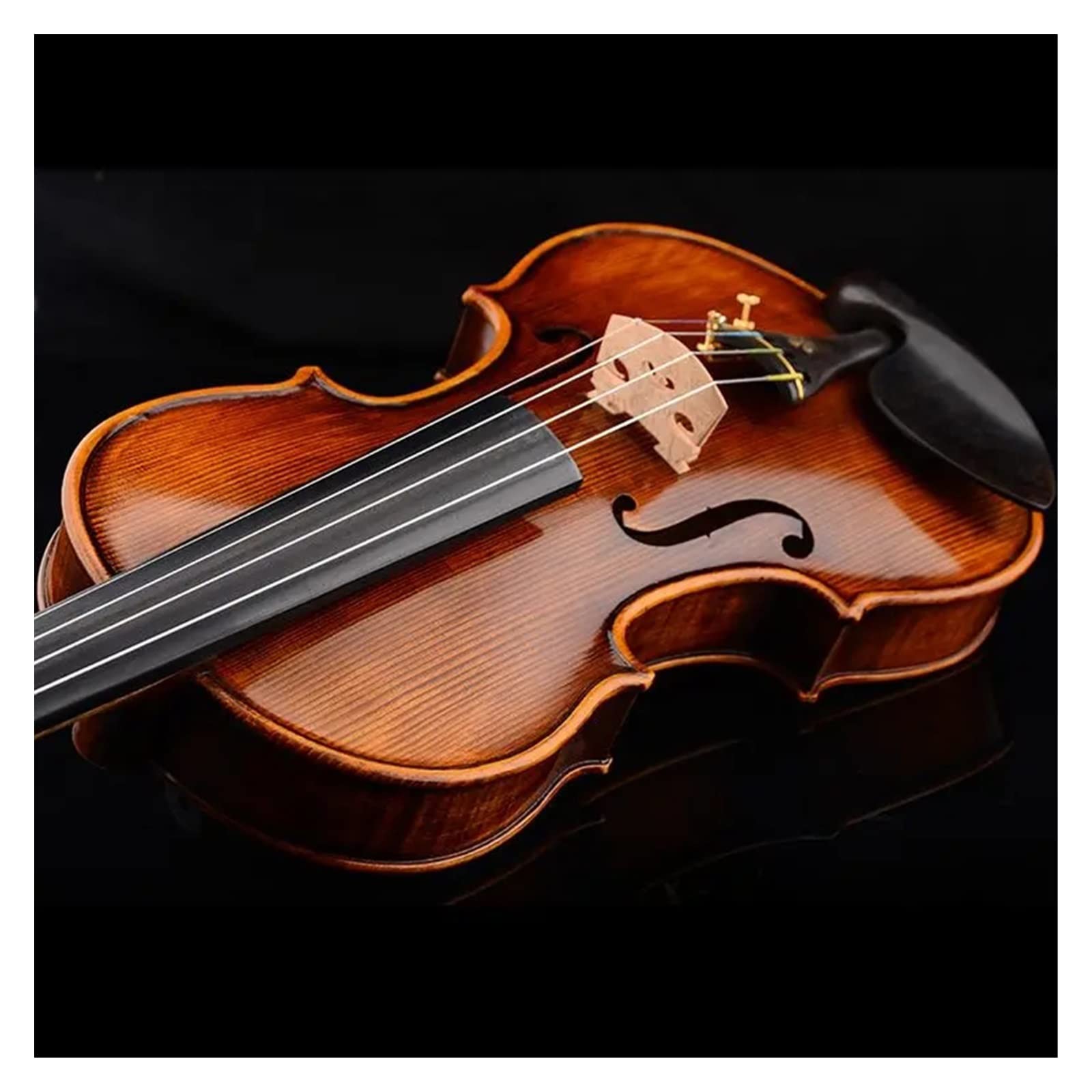
European spruce, particularly from the Italian Alps, Romanian Carpathians, and German Black Forest regions, represents the pinnacle of violin top wood. This slow-growing coniferous wood develops tight, even grain patterns that provide the ideal combination of strength and flexibility needed for optimal sound transmission.
Key characteristics of quality European spruce:
-
Tight, straight grain lines running perpendicular to the violin's length
-
Light weight with high strength-to-weight ratio
-
Excellent resonance properties across the frequency spectrum
-
Natural aging that improves tonal complexity over time
-
Consistent density that promotes even sound distribution
The aging process of European spruce significantly impacts its acoustic properties. Well-aged spruce (15+ years of air drying) develops crystalline structures that enhance resonance and reduce internal damping. This is why vintage European spruce commands premium prices and is sought after by professional luthiers worldwide.
Engelmann Spruce - The New World Alternative
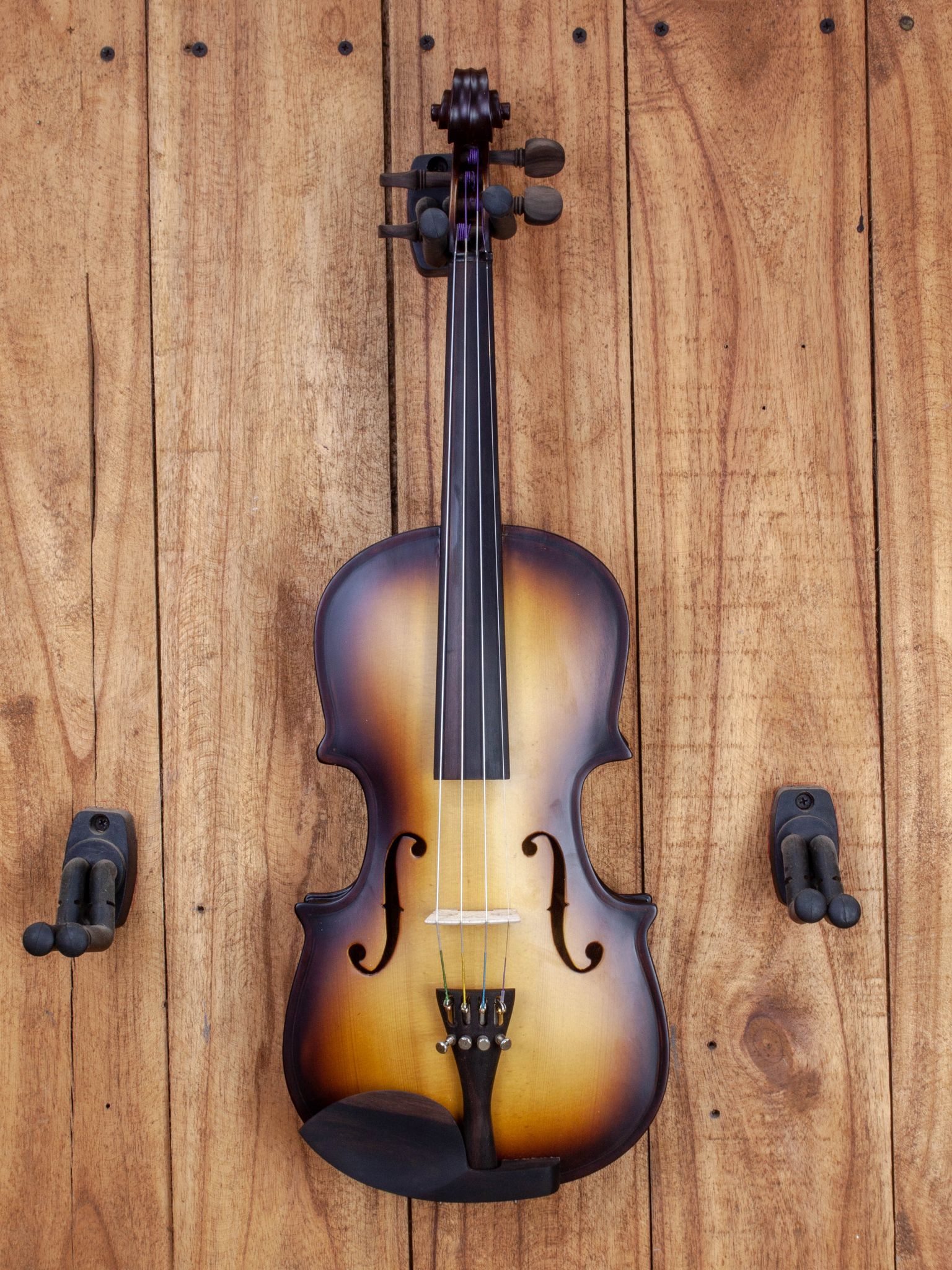
Engelmann spruce, harvested primarily from North American mountain regions, offers excellent acoustic properties at more accessible price points. This species has gained recognition among contemporary violin makers for its responsive nature and ability to produce clear, focused tone.
Engelmann spruce typically features:
-
Slightly wider grain patterns than European varieties
-
Excellent strength-to-weight characteristics
-
Quick response to player dynamics
-
Bright, clear tonal qualities
-
Good projection capabilities
Many modern instruments incorporate Engelmann spruce with excellent results, particularly in student and intermediate violins where the slight tonal differences may be less critical than overall playability and value.
Sitka Spruce - The Versatile Option
Sitka spruce, while more commonly associated with guitar making, has found applications in violin construction, especially for budget-conscious instruments. This North American species offers decent acoustic properties and availability, though it typically lacks the refined tonal complexity of European or Engelmann varieties.
Maple: Shaping Character and Projection
European Maple - Traditional Excellence
The back and sides of traditional violins are crafted from European maple, chosen for its dense, stable structure that provides essential support to the instrument while contributing its own acoustic characteristics. European maple, particularly from the Balkans, Italy, and Germany, offers the ideal combination of density, stability, and visual appeal.
Premium European maple features:
-
Dense, stable wood structure that resists warping
-
Beautiful flame or tiger stripe patterns
-
Excellent sound reflection properties
-
Contributes to overall tonal balance and projection
-
Ages well, developing richer harmonic content over time
The flame patterns in maple aren't just aesthetically pleasing – they indicate the wood's cellular structure and can influence sound reflection properties. Highly flamed maple often provides excellent sound projection due to its varied grain density.
American Maple - The Domestic Alternative
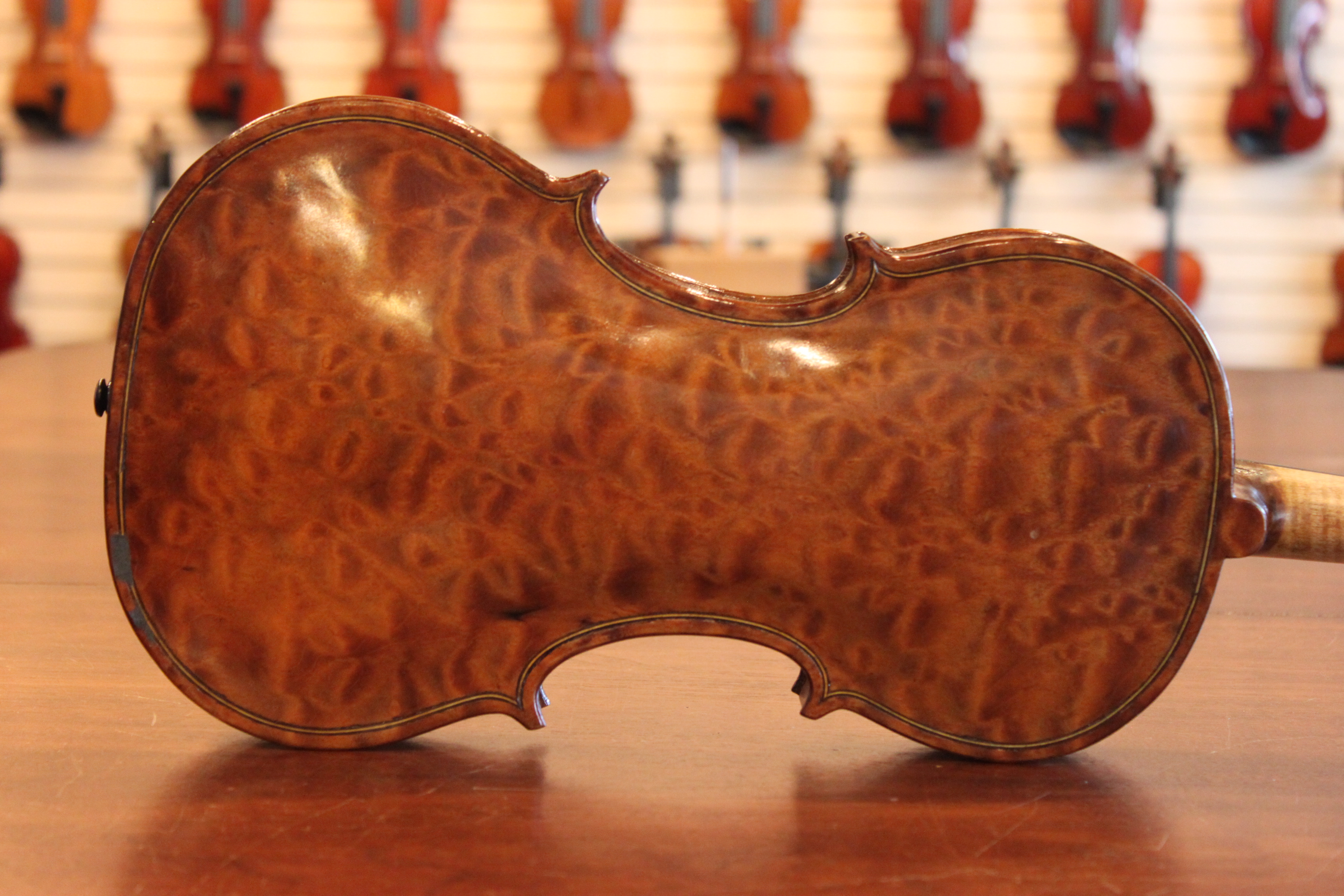
American hard maple varieties, including sugar maple and big leaf maple, have gained acceptance in contemporary violin making. These species offer similar density and stability to European varieties while being more readily available to North American luthiers.
American maple characteristics:
-
Excellent stability and workability
-
Good acoustic reflection properties
-
Often features attractive flame patterns
-
More consistent availability than European imports
-
Competitive acoustic performance in blind testing
The Impact of Maple on Sound
The maple back and sides don't just provide structural support – they actively shape the violin's sound through reflection and resonance. The dense maple reflects sound waves from the spruce top, creating complex interactions that contribute to the instrument's tonal complexity and projection power.
Different maple characteristics affect sound in specific ways:
-
Highly flamed maple often enhances projection and adds brilliance
-
Straight-grain maple typically produces warmer, more focused tone
-
Dense maple contributes to powerful projection
-
Lighter maple may produce more nuanced, complex harmonics
Regional Wood Characteristics and Their Tonal Impact
Italian Wood Traditions
Italian violin making has long relied on local wood sources, particularly spruce from the Val di Fiemme and maple from the Balkans. These traditional sources produce wood with specific characteristics that have shaped the sound of legendary instruments.
Italian spruce characteristics:
-
Extremely tight, even grain patterns
-
Exceptional resonance properties
-
Natural aging in Alpine conditions
-
Historical provenance adding to instrument value
German Workshop Traditions
German violin making centers have developed expertise with local spruce and imported maple, creating instruments with distinctive tonal characteristics. German workshop violins often feature wood combinations that emphasize clarity and projection.
Contemporary Wood Sourcing
Modern violin makers have access to wood from global sources, allowing for experimentation with different regional varieties. However, the fundamental principles of wood selection remain constant: the pursuit of optimal acoustic properties through careful material selection.
How Wood Selection Affects Your Playing Experience
The wood used in your violin directly impacts several aspects of your playing experience:
Tonal Response and Dynamics
Well-selected wood combinations respond more readily to subtle changes in bow pressure and speed, allowing for greater dynamic expression. Instruments with optimal wood choices feel more "alive" under the bow, responding to the player's musical intentions with immediacy and clarity.
Projection and Volume
The efficiency of wood in converting string vibrations to sound waves determines how well your violin projects in different acoustic environments. Premium wood selections help ensure your instrument can be heard clearly whether you're playing solo, in chamber music, or with full orchestra.
Harmonic Complexity
The interaction between different wood species creates harmonic overtones that add richness and complexity to the violin's sound. Well-matched spruce and maple combinations produce instruments capable of generating the subtle harmonic content that distinguishes exceptional violins.
Evaluating Wood Quality When Purchasing
When shopping for a violin, understanding wood quality helps you make informed decisions. Look for these characteristics in potential purchases:
Spruce Top Evaluation:
-
Tight, straight grain lines
-
Consistent grain spacing
-
Light weight with good tap tone
-
Absence of runout or irregular grain
-
Proper quartersawn orientation
Maple Back Assessment:
-
Consistent flame patterns (if flamed)
-
Dense, stable wood structure
-
Good match between back and sides
-
Proper book-matching of two pieces
-
Absence of defects or weak areas
The Relationship Between Wood and Setup
Even the finest wood selection cannot overcome poor violin setup. The interaction between premium wood and expert craftsmanship creates truly exceptional instruments. Understanding how proper setup maximizes your violin's wooden foundation is crucial for optimal performance. Our guide on Violin Setup and Adjustments: Bridge, Soundpost, and String Height Optimization explains how expert setup work brings out the best in quality wood construction.
Maximizing Your Wood's Potential with String Selection
The choice of violin strings significantly influences how your instrument's wood resonates and projects. Different string types interact with wood in unique ways, either enhancing or diminishing the natural characteristics of your violin's construction. Premium wood deserves premium strings that complement its acoustic properties. Learn more in our comprehensive guide Choosing Violin Strings: Synthetic Core vs. Steel vs. Gut String Comparison to understand how string selection can optimize your violin's wooden foundation.
Caring for Your Violin's Wood
Proper care ensures your violin's wood continues to develop and improve over time:
-
Maintain stable humidity levels (45-55%)
-
Avoid extreme temperature changes
-
Clean regularly with appropriate violin care products
-
Store properly in a quality case
-
Have regular maintenance performed by qualified technicians
Finding Your Ideal Wood Combination
Every violinist has unique tonal preferences and playing requirements. The "perfect" wood combination varies based on musical style, performance venues, and personal taste. Some players prefer the brilliant projection of highly flamed maple with tight-grained European spruce, while others favor the warmth and complexity of less dramatically figured wood combinations.
When selecting your next instrument, consider:
-
Your primary musical styles and repertoire
-
Typical performance venues and acoustics
-
Personal tonal preferences
-
Budget considerations for different wood grades
-
Long-term investment goals
Professional Instruments and Premium Wood Selection
Professional violinists require instruments that perform consistently across diverse musical situations. The wood selection in professional instruments must meet exacting standards for:
-
Consistency: Reliable response across the full dynamic range
-
Projection: Ability to carry over orchestral accompaniment
-
Complexity: Rich harmonic content for expressive playing
-
Stability: Consistent performance across varying conditions
-
Longevity: Continued improvement with age and playing
Our collection of professional full-size violins features carefully selected instruments that showcase the finest wood combinations available. Each instrument demonstrates how premium wood selection translates into superior musical performance.
The Future of Violin Wood
As traditional wood sources become more scarce and regulated, luthiers continue exploring sustainable alternatives while maintaining acoustic excellence. Modern scientific analysis helps identify the specific properties that make certain woods ideal for violin construction, potentially expanding options while preserving traditional sound qualities.
Understanding violin wood empowers you to make educated decisions whether you're purchasing your first instrument or adding to a professional collection. The relationship between spruce and maple in your violin's construction directly influences every note you play, making wood selection one of the most important factors in finding your perfect instrument.
The journey of understanding violin wood continues throughout every musician's career. As your playing develops and your musical needs evolve, this knowledge helps you recognize when it's time to upgrade to an instrument that better serves your artistic goals.
